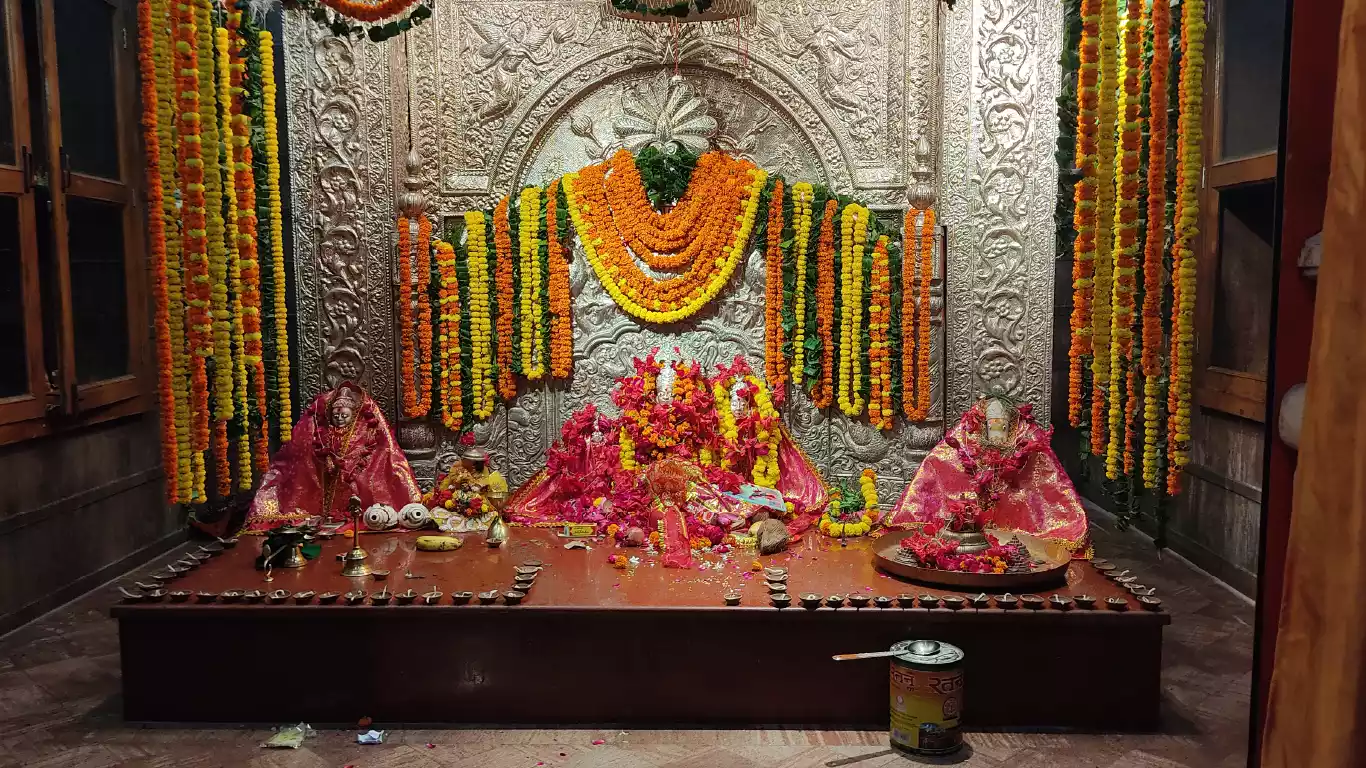Experience the divine aura of Aartis in Naimisharanya through its soul-stirring aartis performed at sacred temples like Chakra Tirth and Lalita Devi Temple. Discover spiritual bliss in the heart of this ancient pilgrimage town.
Naimisharanya, a sacred forest described in ancient Hindu scriptures, holds a unique place in the spiritual geography of India. Revered as the site where sages gathered to listen to the great Puranas and perform yagnas for the benefit of mankind, this ancient pilgrimage center is deeply steeped in divine energy. As a devotee, experiencing temple rituals and aartis in Naimisharanya is not just a religious act—it is an immersion into the very soul of Sanatan Dharma.
In this detailed guide, we walk through the most powerful rituals, sacred chants, and devotional ceremonies that shape the spiritual rhythm of daily life in Naimisharanya.
Aartis in Naimisharanya

The Spiritual Pulse of Naimisharanya
The spiritual air of Naimisharanya is deeply alive with vedic chants, temple bells, conch shells, and the fragrance of incense. Unlike fast-paced urban temples, the rituals here are performed slowly and reverently, drawing the devotee into a deeper meditative state. The temple priests are learned in ancient scriptures, and many temples follow rituals passed down through generations, unchanged for centuries.
Morning Aarti at Lalita Devi Temple – The Shakti Awakens
Lalita Devi Temple, one of the 51 Shakti Peethas, is considered the heart of Naimisharanya. The early morning mangal aarti begins around 5:00 AM.
Key Rituals:
- Mangala Aarti: A serene aarti invoking the blessings of Maa Lalita, offered with lamps, conch shells, and devotional singing.
- Abhishekam: Sacred bath with milk, curd, honey, and holy water.
- Shringar: Decoration of the deity with fresh flowers, kumkum, and silk garments.
- Darshan: Open to devotees post-shringar, accompanied by bhajans and chanting of Lalita Sahasranama.
Devotee’s Experience: The radiant idol of the goddess, bathed in the golden glow of ghee lamps, moves hearts into a state of divine surrender. The aarti here is a true union of sound, light, and emotion.
Chakra Tirtha – Ritual Bathing and Evening Aarti
At the Chakra Tirtha, believed to be the place where Lord Vishnu’s discus (Chakra) created a divine well, pilgrims perform snan (holy bathing) to cleanse sins and attain spiritual merit.
Daily Rituals:
- Ritual Bathing (Snan): Performed at sunrise. Devotees chant mantras and dip three or seven times in the water.
- Deep Daan (Lamp Offering): Held in the evening at the ghat.
- Sandhya Aarti: A divine offering of light to the sacred waters, accompanied by devotional singing.
Devotee’s Experience: The sight of dozens of flickering diyas floating on the Chakra Kund under the twilight sky is both mesmerizing and deeply humbling.
Vyasa Gaddi – Satsang & Knowledge Offering Rituals
The Vyasa Gaddi Mandir, where sage Ved Vyasa is believed to have compiled the Vedas and Puranas, is a center of knowledge and silent meditation.
Ritual Practices:
- Gyan Yagna: Ritual recitation of scriptures like Srimad Bhagavatam or Ramayana.
- Pushpanjali & Guru Vandana: Offerings of flowers and salutation to Vyasa Muni.
- Quiet Meditation Hours: Observed in the evening post aarti.
Devotee’s Experience: Sitting in silence at Vyasa Gaddi, surrounded by ancient stones and echoes of timeless truths, is one of the most profound moments in Naimisharanya.
Hanuman Garhi Temple – Energetic Bhajans & Hanuman Chalisa Chanting
This temple dedicated to Lord Hanuman is a vibrant spiritual hub known for its powerful aartis and collective chanting.
Important Rituals:
- Sankat Mochan Aarti: Held in the morning and evening, believed to remove obstacles.
- Hanuman Chalisa Path: Devotees gather to recite 108 Hanuman Chalisas on Tuesdays and Saturdays.
- Tilak & Sindoor Offering: As a symbol of devotion to the warrior deity.
Devotee’s Experience: The thunderous chanting of Hanuman Chalisa fills the temple halls with energy, making it a cathartic and spiritually uplifting experience.
Sut Gaddi Temple – Ritual Recitation of Puranas
At this temple, where Suta Goswami narrated the Puranas to the sages, rituals center around knowledge, discourse, and vedic storytelling.
Rituals to Note:
- Puran Path: Daily reading sessions of Skanda Purana, Vishnu Purana, or Bhagavatam.
- Guru Pujan: Special days are observed in honor of Guru Suta, with offerings and devotional talks.
- Akhand Ramayan Paath: Organized during festivals like Ram Navami.
Devotee’s Experience: Listening to ancient stories in the very place where they were once spoken is a time-traveling spiritual journey in itself.
Festive Rituals in Naimisharanya – A Glimpse into Divine Celebrations
Kartik Purnima & Makar Sankranti
- Special snans, deep daan, and collective yajnas.
- Thousands of pilgrims gather at Chakra Tirtha for kund snan and mass aartis.
- Daily Durga Saptashati recitation
- Grand aartis and distribution of kumari bhojan (feast for young girls)
Guru Purnima
- Celebrated with great devotion at Vyasa Gaddi with Guru Abhishekam and scriptural offerings.
Devotee’s Experience: The entire town transforms into a live canvas of devotion during festivals. Chanting, music, yajnas, and processions fill the air with bhakti.
Suggested Temple Visit Timings for Devotees
| Temple | Morning Rituals | Evening Aarti |
|---|---|---|
| Lalita Devi Mandir | 5:00 AM – 8:00 AM | 6:30 PM – 7:30 PM |
| Chakra Tirtha | 6:00 AM – 7:00 AM (Snan) | 7:00 PM (Deep Daan Aarti) |
| Vyasa Gaddi | 7:00 AM – 10:00 AM | 5:30 PM – 6:30 PM |
| Hanuman Garhi | 6:30 AM – 8:00 AM | 7:00 PM – 8:00 PM |
| Sut Gaddi Temple | 9:00 AM – 11:00 AM | 4:00 PM – 6:00 PM |
Rituals You Can Participate In as a Devotee
- Archana (personal prayer with your name and gotra)
- Pitra Tarpan (ancestral offerings) at Chakra Tirth
- Yagna sponsorship or participation at group yajnas
- Volunteering for aarti preparation or prasad distribution
Final Thoughts
A pilgrimage to Naimisharanya is more than just a temple visit. It is a full-fledged experience of spiritual discipline, ancient ritual, and divine surrender. The rituals and aartis here are not merely ceremonies—they are bridges between the seen and the unseen, between the soul and the divine.
Every lamp you light, every mantra you chant, and every step you take within this ancient forest brings you closer to the eternal truths whispered through the ages.





